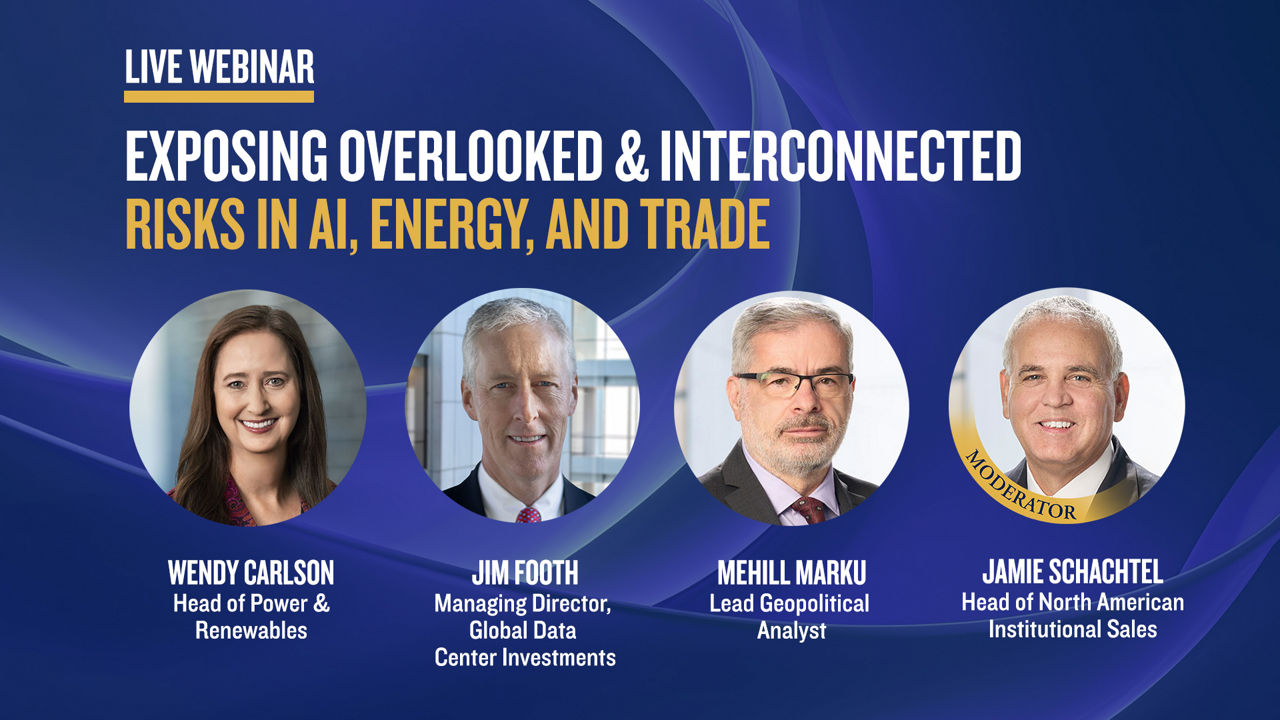PGIM’s 2025 Global Institutional Summit brought together industry leaders, asset allocators and policymakers at the Harold Pratt House in New York City. Our experts gathered to discuss market cycles, geopolitics, credit markets, and energy policy, among other topics.
Following are some of the key points that were covered at the Summit:
- The blurring of public and private credit – As credit markets expand to new segments of the economy, the dividing line between public and private credit is fading away. This is providing new opportunities for investors to diversify and pursue enhanced returns through a comprehensive portfolio of assets from across the credit universe. Investors are finding new opportunities in middle-market lending, large-cap private credit and real estate debt, as well as securitized credit, including private ABF. The current entry point into agriculture is also compelling. Long-term holders can also be rewarded with illiquidity spread. Meanwhile, investment vehicles like BDCs, evergreen funds and rated-feeder structures are making private credit available to more investors.
- Investing across market cycles – Our panelists discussed the challenge of investing to meet long-term commitments while navigating shifting macro regimes, threats and opportunities such as the energy transition and AI, along with structural demands on liquidity and risk. While the current cycle can be described as murky, drifting away from a strategic asset allocation plan is a non-starter given the long-term needs of retirees and would-be retirees. That said, there are emerging signs of potential cracks, including investor complacency, gold and silver prices at record highs, and arguably stretched equity valuations. Managers who can be more tactical, particularly in credit markets, can be an advantage in such environments.
- Trade, tariffs, taxes, and talent – Across grocery, wine, and agriculture, the operating playbook is being rewritten by tariffs and trade frictions, volatile freight costs, shifting tax rules, and tight labor/immigration dynamics. Tax rules changed again in 2025; bonus depreciation has been restored to 100% for qualifying property placed in service after Jan. 19, 2025 (with a transition window), and the Section 199A pass-through deduction has been made permanent. That reshapes payback math on equipment, warehousing, and automation — but only if execution is tight. Labor costs continue to rise in agriculture year after year, though automation is helping address those rising costs.
- From geopolitics to gigawatts – The traditional market forces that drive supply and demand fundamentals in the energy market are changing. Geopolitics, industrial policy, and technological transformation are increasingly relevant to how investors think about the global energy landscape. Expectations for growing demand may be constrained by the ability for the energy system to grow at the same pace. On the demand side, EV adoption, reindustrialization, crypto mining, defense spending and AI will be among the dominant drivers, while on the supply side, oil & gas and new, ground-breaking technologies such as the commercialization of fusion will be required. The development of the latter comes with challenges, including extensive capital needs, but is attracting substantial investment given recent advancements and its “moonshot” potential to address the massive energy needs of AI hyperscalers and to provide clean energy.
You may also like
-
Live WebinarExposing Overlooked & Interconnected Risks in AI, Energy, and TradePGIM experts discuss managing risk and positioning portfolios as the future of AI, energy and trade takes shape.
Read More
-
Q4 Market OutlookIn a "muddle through" economy, attractive yields may catch a tailwind, while equities require focus on high-quality companies with competitive advantages. Flexibility across asset classes will support portfolio resiliency.
Read More
-
Webinar ReplayCredit Convergence CFA Webinar SeriesExplore the expanding private credit space and learn practical insights to support informed investment decisions in a rapidly transforming credit environment.
Read More




